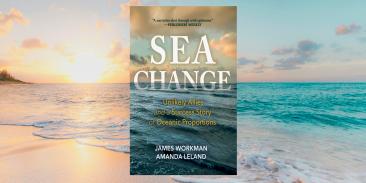Smithfield Addresses the Hog Industry’s Vulnerability to Climate Change
EDF welcomes new measures to improve resilience, reduce methane emissions
(NEW YORK, NY) With North Carolina still recovering from the devastation of Hurricane Florence, Smithfield Foods, the world’s largest pork producer, today committed to invest in infrastructure and provide farmer incentives to install manure lagoon covers and digesters on 90 percent of the total hog finishing capacity in North Carolina, Missouri and Utah over the next 10 years. These technologies protect manure lagoons from excessive rainfall, capture methane emissions and generate renewable energy from biogas.
The commitment includes Smithfield’s own operations and contract farms, as well as opportunities for other integrators to join. Meeting this goal would help Smithfield exceed its industry-leading commitment to reduce supply chain greenhouse gas emissions 25 percent by 2025.
“Hurricane Florence demonstrated the vulnerability of hog farms to extreme weather and underscored the urgent need to prepare for the impacts of climate change,” said Fred Krupp, president of Environmental Defense Fund. “Smithfield is demonstrating leadership by investing in solutions that build climate resilience and cut greenhouse gas emissions.”
“Smithfield’s commitment to deploy technologies that convert methane into renewable biogas will substantially reduce emissions of a powerful greenhouse gas and create economic opportunities for rural communities. EDF and Smithfield don’t agree on everything, but we’ve found common ground on sustainability goals. This commitment marks a welcome turning point for the industry,” Krupp added.
Implementing lagoon covers and digesters at scale has the potential to capture more than 85,000 metric tons of methane per year, which in turn can be used to replace fossil fuels. The climate impact of these reductions over 20 years is equivalent to eliminating carbon dioxide emissions from more than 700,000 homes.
Widespread use of this technology will help protect hog farms, neighboring communities and the environment during excessive rainfall. Smithfield’s Optima KV biogas project, for example, withstood record rainfall during Hurricane Florence. Covers kept manure from mixing with rainwater, and the project resumed normal operations as soon as the storm passed.
Covers and digesters do not eliminate water quality and odor concerns near hog farms. EDF will continue to collaborate with Smithfield and other partners to close operations in high-risk floodplains and implement solutions that improve quality of life and environmental outcomes.
With more than 3 million members, Environmental Defense Fund creates transformational solutions to the most serious environmental problems. To do so, EDF links science, economics, law, and innovative private-sector partnerships to turn solutions into action. edf.org
Media Contact
Latest press releases
-
Groups File Lawsuit Challenging Trump EPA Final Rule That Delays Methane Pollution Protections from Oil and Gas Industry
December 4, 2025 -
New Statewide Survey: As Electricity Demand and Costs Skyrocket, Arizonans Support Building More Wind and Solar Energy
December 4, 2025 -
Trump Administration Announces Plan to Weaken Fuel Economy Standards for Cars and Trucks
December 3, 2025 -
Trump EPA Proposal Lowballs Risk of Cancer-causing Formaldehyde
December 3, 2025 -
New York Finalizes Greenhouse Gas Reporting Requirements for Major Polluters
December 2, 2025 -
Canada-Alberta MOU a Disappointing Retreat on Oil & Gas Methane Regulation
November 27, 2025











